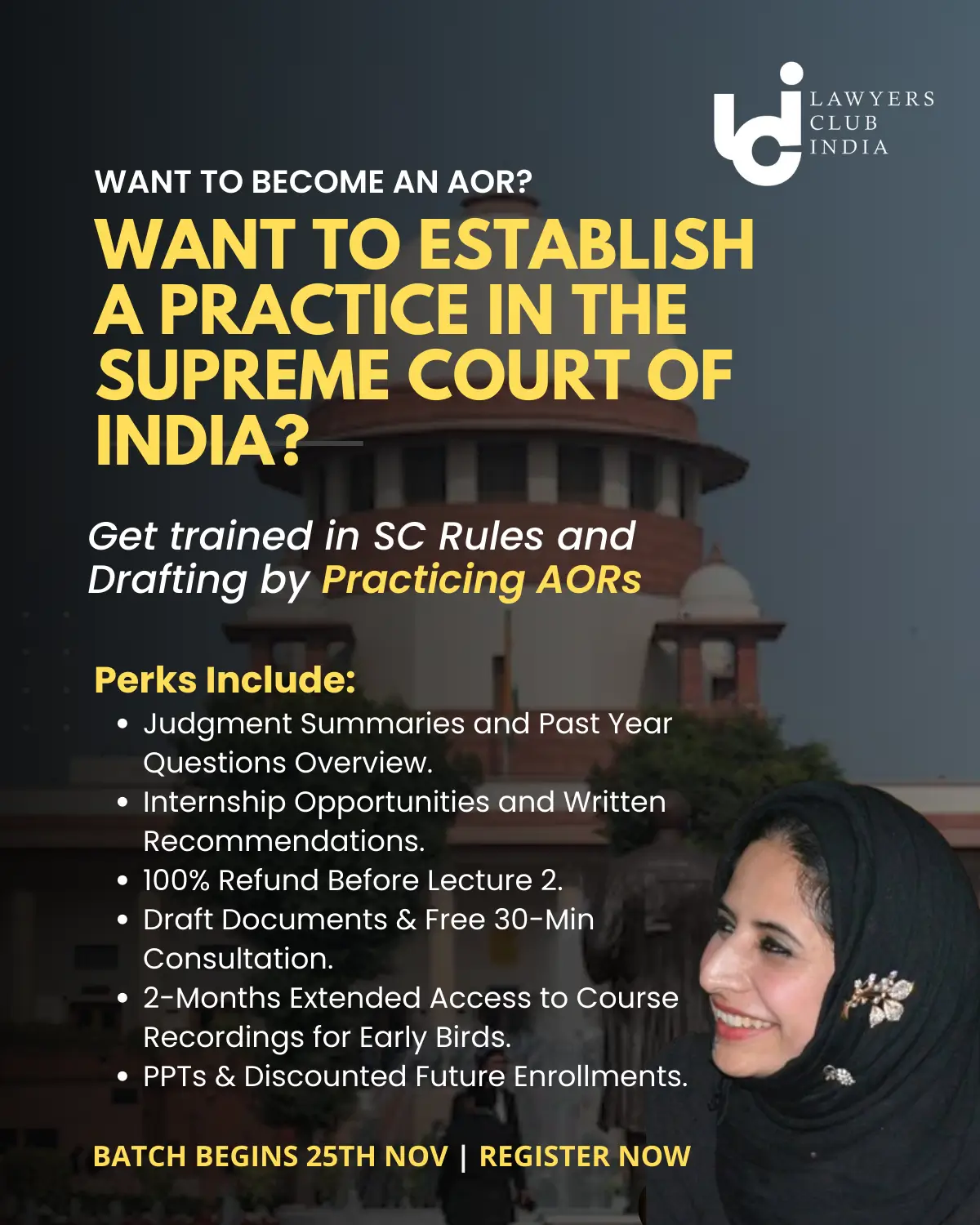KEY TAKEAWAY –
- What is Strict liability?
- What is absolute liability?
- Difference between strict and absolute liability
- Case laws
INTRODUCTION-
There are some occupations that are so risky that both people and property are always in danger. Law may respond to these circumstances in one of two ways. The law might outright forbid them. It may urge them to continue for the benefit of society, but only if they do so in accordance with legislative norms and requirements that establish safety precautions and offer penalties for non-compliance under the "Strict liability" theory. Strict liability is applied under absolute liability, but there are no exceptions.
In general, a person has no responsibility for the wrongdoings of others and is only accountable for his own incorrect actions. Vicarious liability is one situation where someone may be held accountable for another person's actions. Strict liability and absolute liability are further categories for liability.
What is strict Liability?
Strict responsibility is a type of liability where a person is held legally liable for the results of their actions even in the absence of their negligence or malicious intent. It is essentially a legal principle that holds a party (the defendant) accountable for its acts without the plaintiff having to establish the defendant's carelessness or guilt.
In the year 1868, the case Rylands v. Fletcher led to the development of the strict liability doctrine. According to the strict responsibility concept, anyone who stores dangerous substances on his property will be held accountable if those substances escape and cause any damage. In the case's facts, F built a reservoir on his land in order to power a mill that was on his property. Due to an accident, R's coal mines were flooded by water from the reservoir. R then brought legal action against F. The court decided that because the defendant constructed the reservoir at his own risk, he is responsible for any accidents that occur during construction and any material that escapes.
Following the logic established in this example, it may be concluded that if someone brings a dangerous item onto their property and maintains it there, and that item is likely to cause damage if it escapes, that person will be responsible for the harm that is done. Even if he wasn't careless in retaining the substance on his property, the owner of the property from which the substance escaped will be held liable. He is held liable even though he did not act negligently because of the hazardous and deadly material he keeps on his property. The idea of strict liability was created as a result of this judicial decision. There are a few prerequisites that must be met in order to classify a liability as strictly liable.
Essentials of strict liability-
Dangerous Substances: The offender will only be rigorously held accountable if a "dangerous" substance escapes from his property.
For the purposes of strict liability, any substance that could cause trouble or harm if it were to escape qualifies as a dangerous substance. Electricity, toxic gases, explosions, and other things are examples of hazardous things.
Escape: The substance must escape from the premises and must not be within the defendant's grasp after it has done so in order for the defendant to be held strictly accountable.
Non-natural Use: In order to give rise to strict liability, the use of the land must not be Natural. In the Rylands v. Fletcher case, it was determined that the water kept in the reservoir was not a natural use of the land. Storage of water for domestic use is thought to be a natural use. The Court, however, believed that storing water in order to operate a mill was against nature. If "non-natural" is to be taken into account, it must be employed in a special way that puts other individuals at risk.
Exceptions to the Strict Liability Principle
The strict responsibility rule has some exceptions, which include:
Plaintiff's Fault: If the plaintiff is responsible for any damage, the defendant wouldn't be held liable because the plaintiff was the one who really came into touch with the potentially harmful substance.
In the case of Ponting v. Noakes, the plaintiff's horse passed away after entering the defendant's land and ingesting some poisonous leaves. It was a wrongful intrusion, the court said, and the defendant could not be held strictly accountable for the damage.
Act of God: An event that is uncontrollable by any human activity is what is meant when the phrase "act of God" is used. Even with prudence and forethought, such acts cannot be stopped because they only occur for natural reasons. If the harmful substance escaped due to an unforeseeable, uncontrollable natural event, the defendant would not be responsible for the loss.
Act of the Third Party: The rule also does not apply when harm is caused by a third party's action. A "third party" is referred to as a person who is not a contract partner, an agent of, or an employee of the defendant. But when a third party's conduct can be foreseen, the defendant must proceed with prudence. If not, he will be held responsible.
For instance, the Court determined that the defendant wouldn't be liable in the case of Box v. Jubb, when the defendant's reservoir flooded as a result of another party emptying his drain into the defendant's reservoir.
Plaintiff's consent: This exception abides by the violenti non fit injuria rule.
Absolute Liability-
Simply put, the rule of absolute liability is the strict liability rule with the exceptions removed. In the case of MC Mehta v. Union of India, the doctrine of absolute liability was established in India. One of the most significant rulings pertaining to the idea of absolute liability is this one.
The case's facts state that some oleum gas from industrial escaped in a certain neighbourhood of Delhi. Numerous persons were impacted as a result of the breach. The Apex Court then developed the concept of absolute liability based on the concept of strict liability and declared that the defendant would be accountable for the harm caused regardless of whether the strict liability rule's exceptions were taken into account.
The rule of absolute liability states that if someone is engaging in an activity that is inherently dangerous or hazardous and someone is harmed as a result of an accident that happened while performing that inherently dangerous or hazardous activity, the person engaging in that activity will be held absolutely liable. Additionally, the strict responsibility exception would not be taken into account. The Supreme Court decided the Bhopal Gas Tragedy case by applying the standard established in the MC Mehta v. UOI judgment. The Public Liability Insurance Act was enacted by the Indian Legislature in 1991 to guarantee that victims of such catastrophes receive prompt assistance through insurance.
Difference between Strict Liability and Absolute Liability-
The following are the differences between Strict Liability and Absolute Liability: -
- Any person may be held liable under strict responsibility, but only an enterprise may be held liable under absolute liability.
- In absolute liability, an organization can be held accountable even in the absence of a harmful thing escaping; in strict liability, this is not the case.
- In contrast to absolute liability, which has no defenses, strict liability allows for a few exceptions.
Conclusion-
The two exceptions to this rule are strict liability and absolute liability. One can only hold someone accountable when they are at fault. The fundamental tenet of these two laws is that someone can be held accountable even if they haven't done anything illegal. This concept is known as "no fault liability." These rules state that even if the responsible party did not engage in the act, he is nevertheless liable for any damage it causes. Under strict responsibility, there are certain situations in which the defendant wouldn't be responsible. However, in situations of absolute guilt, the defendant is not permitted any exceptions. According to the strict responsibility rule, the defendant is totally responsible.
Join LAWyersClubIndia's network for daily News Updates, Judgment Summaries, Articles, Forum Threads, Online Law Courses, and MUCH MORE!!"
Tags :Others













